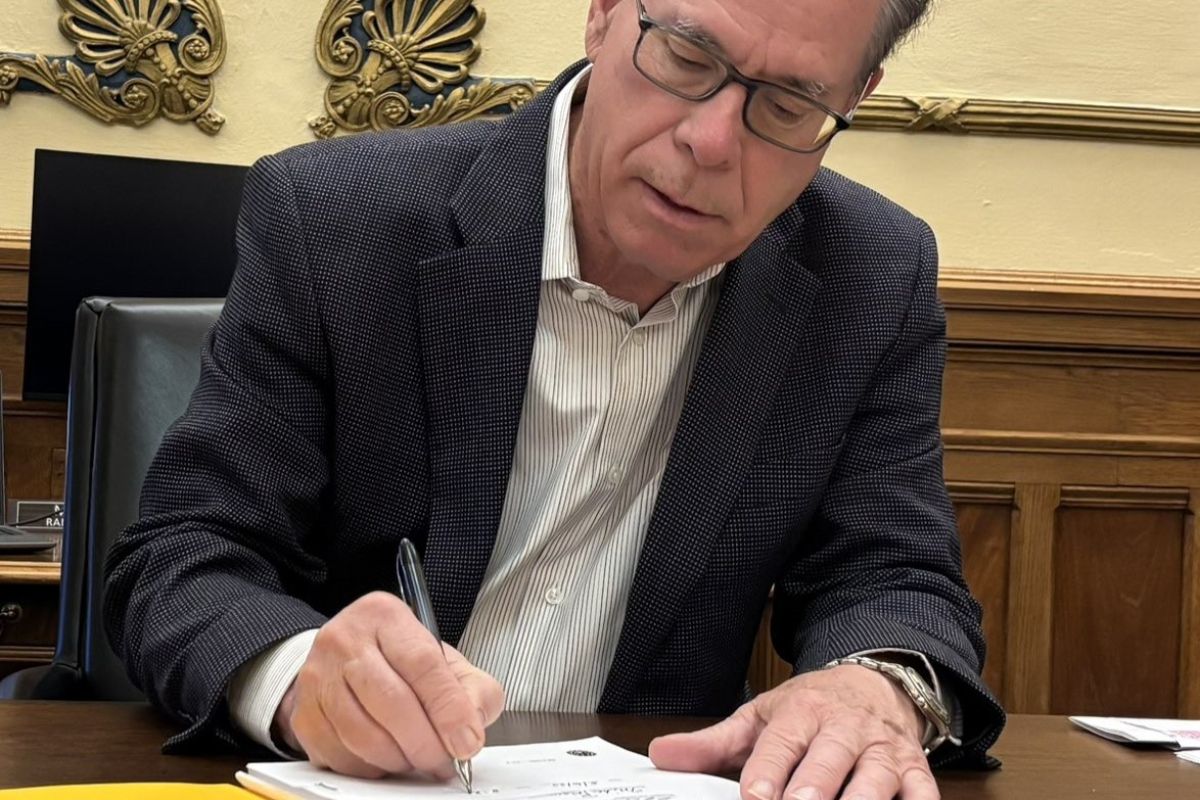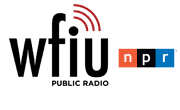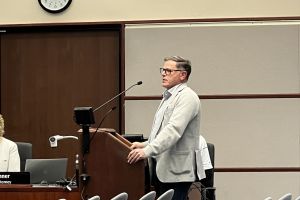
Indiana Gov. Mike Braun signs legislation into law from his Statehouse office on Tuesday, May 6, 2025. (From Braun’s official X account)
Indiana’s next two-year, $44 billion budget at last became law on Tuesday with Gov. Mike Braun’s signature, along with 62 other measures.
Legislative leaders sent them to the governor’s desk on April 29, the last day of the legislative session. That started a seven-day clock for Braun to either sign or veto the stack; afterward, they would’ve passed into law without him.
“This morning, I signed a balanced, responsible biennial budget that protects Indiana’s strong fiscal foundation while investing in our future,” an afternoon post on Braun’s X account read.
“This budget will preserve our reserves, maintain our AAA credit rating, and deliver on key priorities — including education, public safety, and tax relief for Hoosiers,” the post continued. “(I’m) Grateful to our fiscal leaders for their work navigating a tight revenue forecast and ensuring government stays efficient and focused on what matters most.”
Republicans finalize $44 billion budget, while Democrats point to missed opportunities
A grim revenue forecast forced the state’s budget architects to chop $2 billion in spending from the 232-page House Enrolled Act 1001 in just a week. That entailed 5% cuts to public higher educational institutions and most state agencies, a 25% cut to the state’s quasi-public economic development arm, and a 60% cut to public health funding, among others.
Funding was nixed entirely for trails, public broadcasting, and musician-philanthropist Dolly Parton’s Imagination Library — which mails free books to children up to 5 years old to promote literacy. First Lady Maureen Braun has launched a fundraising initiative to sustain the last program.
Lawmakers also raised taxes on tobacco products after years of resistance.
The budget gives the Department of Correction, the Department of Child Services and the Family and Social Services Administration a combined augmentation fund of $300 million to cover unexpected expenses. Money will be distributed at Braun’s discretion.
That trio of agencies receives the most state money besides K-12 education, which eats up 48% of the budget. Public schools earned a modest 2% increase. And in the budget’s second year, Indiana will drop remaining income limits and move to a universal taxpayer-funded “school choice” voucher system.
Other bills nab signatures
Major legislation establishing price transparency requirements for clinical laboratories and diagnostic imaging centers, limiting “anti-competitive” health provider-insurer contract provisions, curtailing nonprofit hospital service charges, mandating health care ownership reporting and banning hospital-physician non-compete agreements also become law Tuesday.
Advocates celebrated.
“Americans across the country and in Indiana are grappling with unaffordable health care costs driven by the unchecked growth of big health care corporations. … Indiana is no exception, suffering from some of the highest health care costs in the country,” Sophia Tripoli, a senior director of health policy at Families USA, said in a statement.
Tripoli called the new laws “a major step to fight back against these main drivers of high health care costs and bring down prices for patients and their families.” She urged lawmakers at state legislatures across the country, as well as in Congress, to “follow (Braun’s) lead.”
Braun has indicated there’s more to come, telling reporters last week that tackling Indiana’s high health care costs and poor outcomes is his top priority. He repeatedly asked health care industry players for solutions while threatening punishment for stasis.
Other newly minted laws include:
- House Enrolled Act 1002, a House Republican priority dubbed an education “deregulation” effort. It strikes multiple sections from Indiana Code: duplicates, dozens of “may” provisions, specific COVID-19 pandemic requirements and more. Author Rep. Bob Behning, R-Indianapolis, estimated that it would slash Indiana’s education regulations by nearly 10%.
- House Enrolled Act 1007, a mammoth electricity generation proposal. It will expedite approval process for large-load customers, let utilities recover costs incurred for projects required to serve those big users, and require those users to make financial assurances for such projects. It also gets tough with utilities planning to close or convert large coal-fired plants and creates a tax credit for small modular nuclear reactor manufacturing expenses.
- House Enrolled Act 1221, which gives Indiana’s public sector retirees a benefit bonus. A 5% drop in check amounts will slice an estimated $1.7 million off the $33.5 million cost, which is paid out of dedicated accounts instead of the General Fund. Checks are due by October.
- Senate Enrolled Act 287, a narrowly approved measure adding Indiana to the small group of states running partisan school board elections.
- Senate Enrolled Act 289, which is intended to limit diversity, equity and inclusion initiatives in schools, state government and health profession licensing. Author Sen. Gary Byrne, R-Byrneville, said it will outlaw “discrimination” that is “based on a personal characteristic of the person” in those settings.
- Senate Enrolled Act 442, a “human sexuality instruction” measure. It requires school boards to approve any materials used to teach grades 4-12 and mandate that elementary school students watch an ultrasound video of fetal development. Students would also have to learn about “the importance of consent to sexual activity” — a provision that sparked a last-minute fight and was briefly removed.
To see the full list of signed bills, visit the governor’s 2025 Bill Watch page.
GET THE MORNING HEADLINES.
Indiana Capital Chronicle is part of States Newsroom, a nonprofit news network supported by grants and a coalition of donors as a 501c(3) public charity. Indiana Capital Chronicle maintains editorial independence. Contact Editor Niki Kelly for questions: info@indianacapitalchronicle.com.











